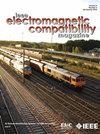让 PINN 正常工作的数学公式的重要性
IF 2
3区 计算机科学
Q3 ENGINEERING, ELECTRICAL & ELECTRONIC
IEEE Transactions on Electromagnetic Compatibility
Pub Date : 2024-11-15
DOI:10.1109/TEMC.2024.3490699
引用次数: 0
摘要
基于物理的神经网络是一种强大的方法,它将深度学习与物理原理结合起来解决复杂问题。然而,像任何方法一样,它们也有一些缺点。第一个是超参数敏感性,如学习率、网络架构和激活函数。许多研究者通过寻找最优超参数来设计高效的神经网络模型。在本文中,我们通过显示待解决问题的数学公式来遵循另一条路径,对模型的性能有关键影响。静电的例子说明了这一点。本文章由计算机程序翻译,如有差异,请以英文原文为准。
On the Importance of the Mathematical Formulation to Get PINNs Working
Physics-informed neural networks are a powerful approach that combines deep learning with physical principles to solve complex problems. However, like any method, they do have some drawbacks. The first one is hyperparameter sensitivity such as learning rates, network architectures, and activation functions. Many researchers have devoted their time and energy to design efficient neural network models by searching optimal hyperparameters. In this article, we follow another path by showing that the mathematical formulation of the problem to be solved, has a critical influence on the performance of the model. Electrostatic examples illustrate this.
求助全文
通过发布文献求助,成功后即可免费获取论文全文。
去求助
来源期刊
CiteScore
4.80
自引率
19.00%
发文量
235
审稿时长
2.3 months
期刊介绍:
IEEE Transactions on Electromagnetic Compatibility publishes original and significant contributions related to all disciplines of electromagnetic compatibility (EMC) and relevant methods to predict, assess and prevent electromagnetic interference (EMI) and increase device/product immunity. The scope of the publication includes, but is not limited to Electromagnetic Environments; Interference Control; EMC and EMI Modeling; High Power Electromagnetics; EMC Standards, Methods of EMC Measurements; Computational Electromagnetics and Signal and Power Integrity, as applied or directly related to Electromagnetic Compatibility problems; Transmission Lines; Electrostatic Discharge and Lightning Effects; EMC in Wireless and Optical Technologies; EMC in Printed Circuit Board and System Design.

 求助内容:
求助内容: 应助结果提醒方式:
应助结果提醒方式:


